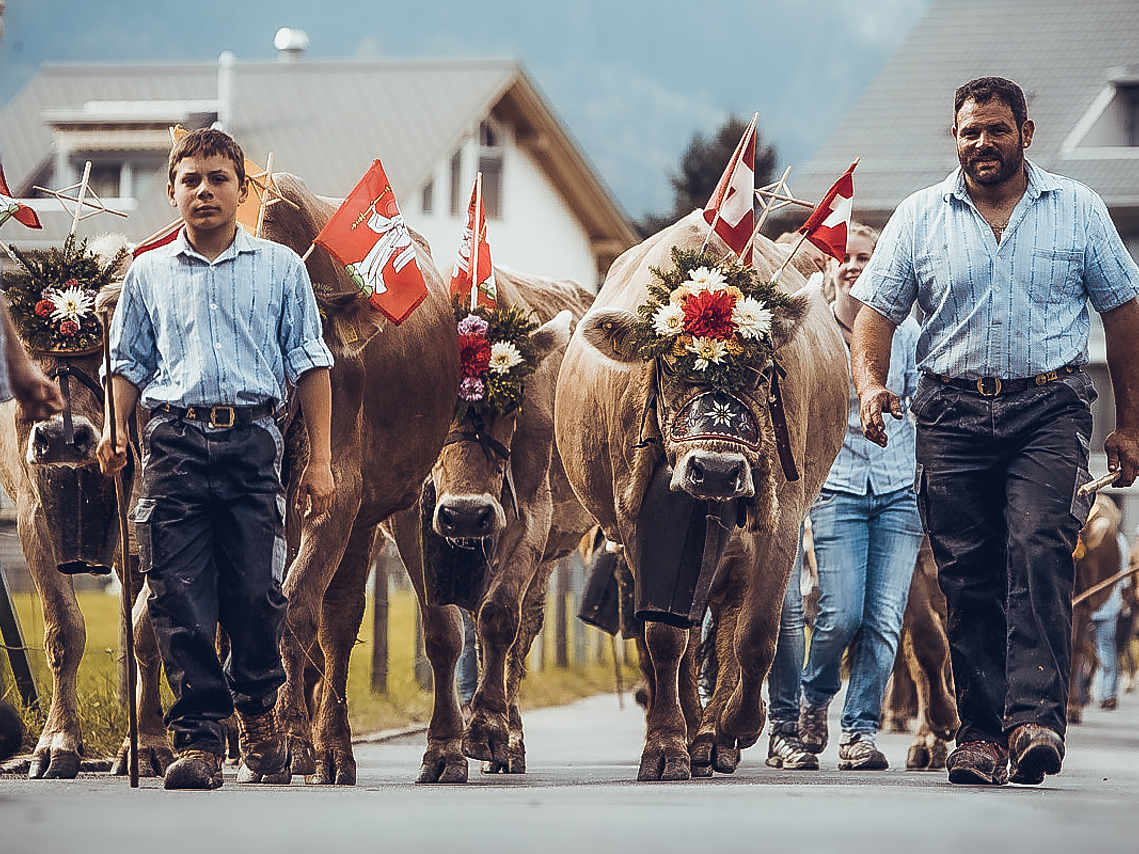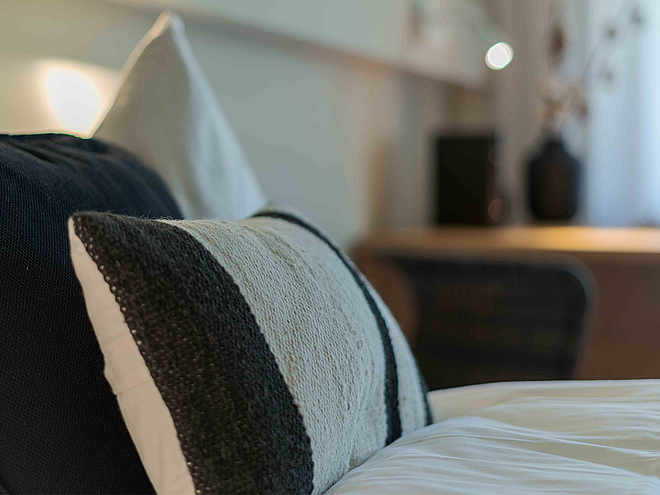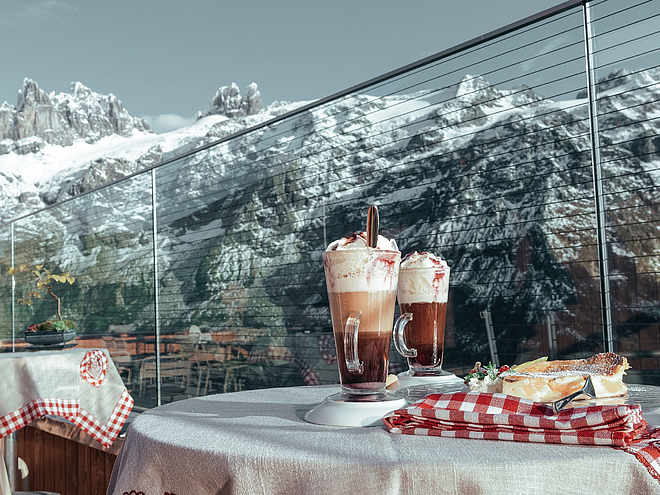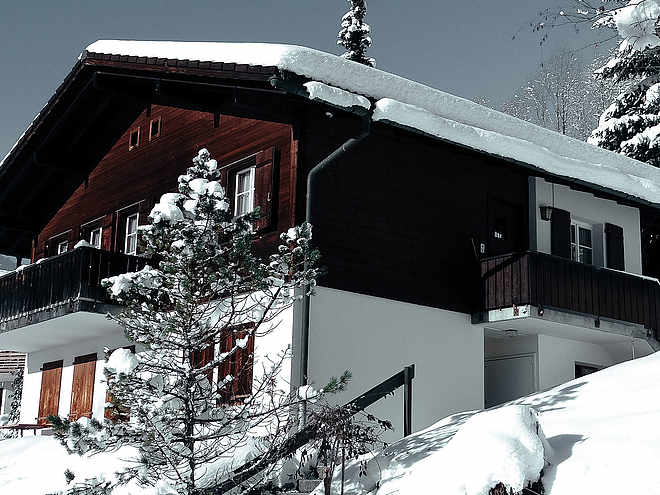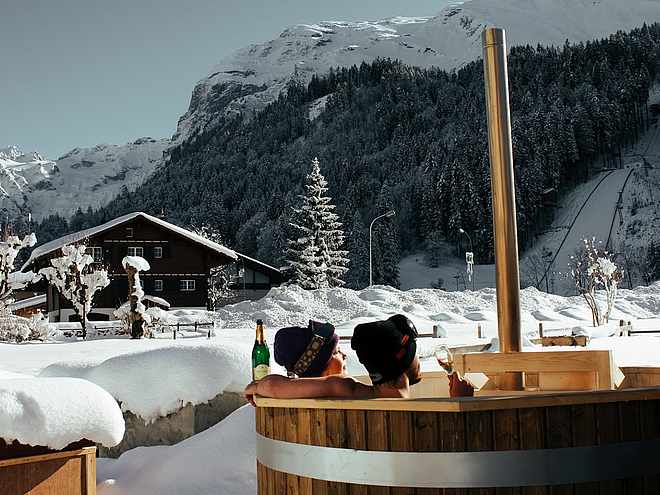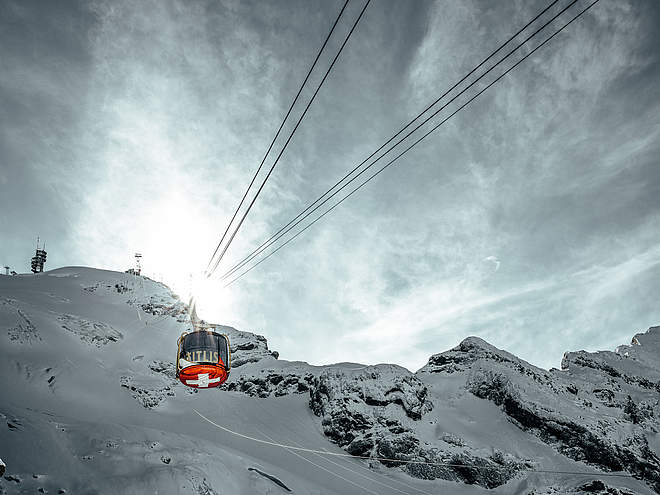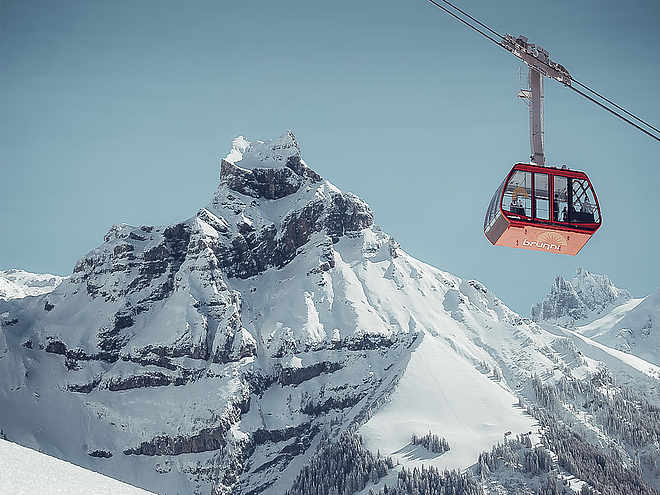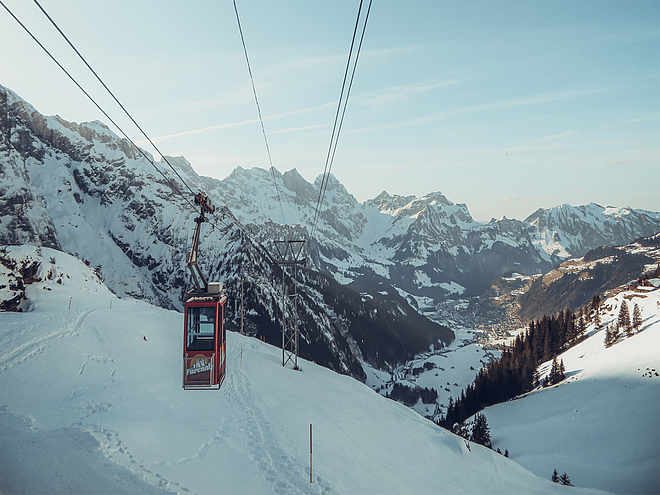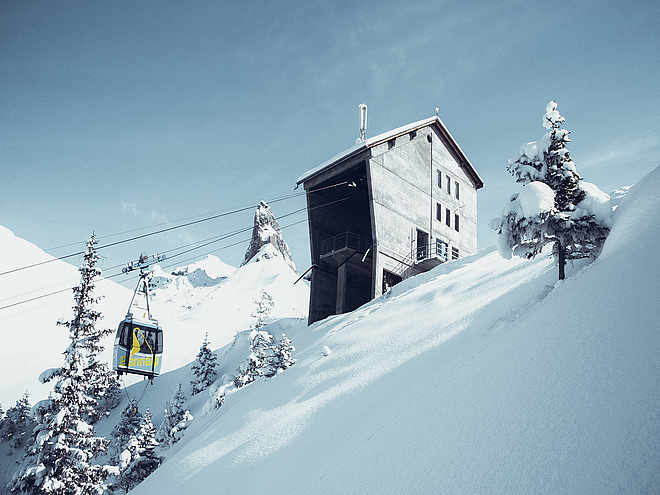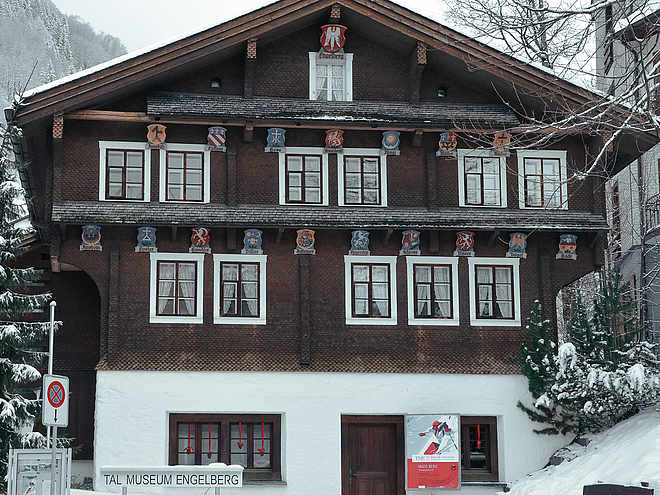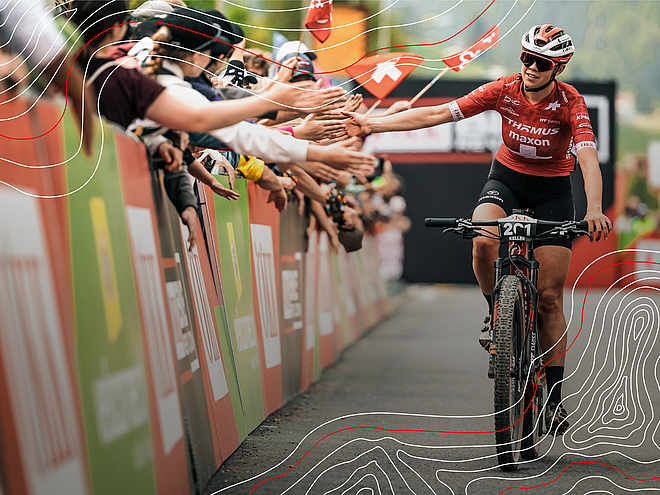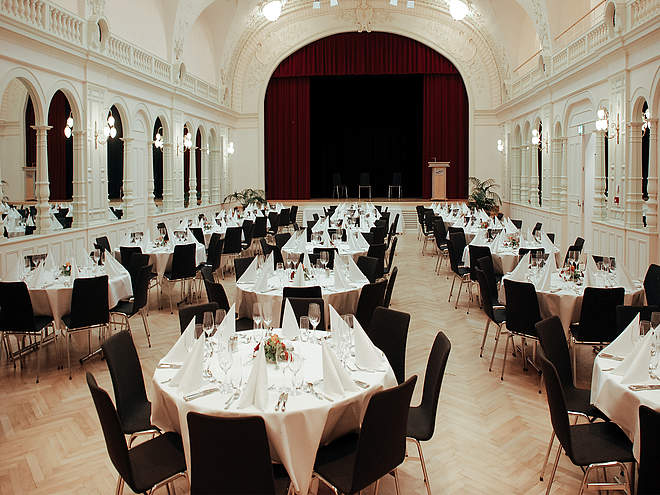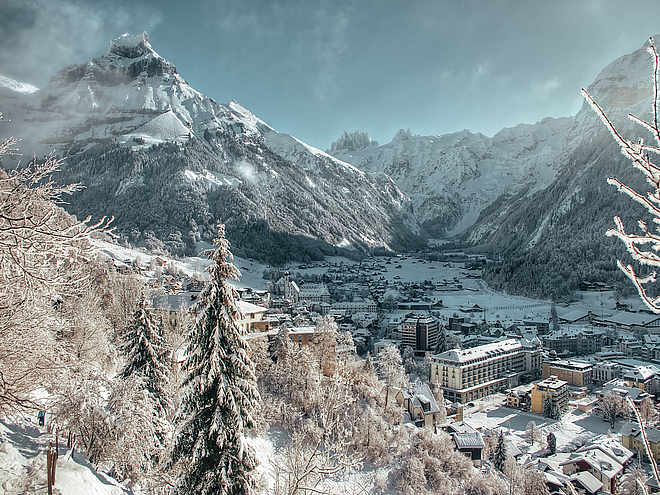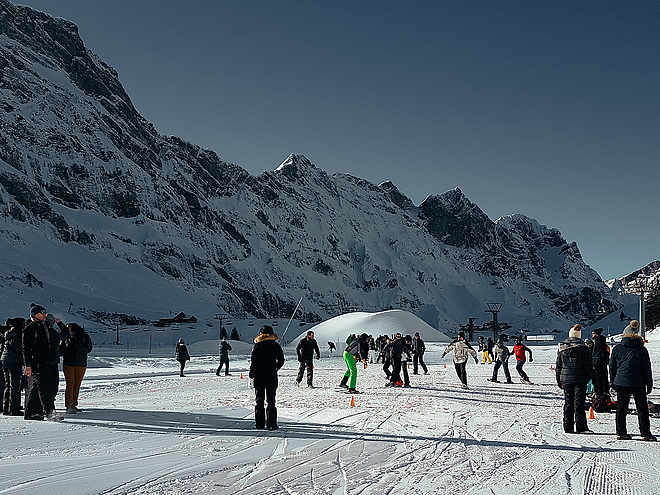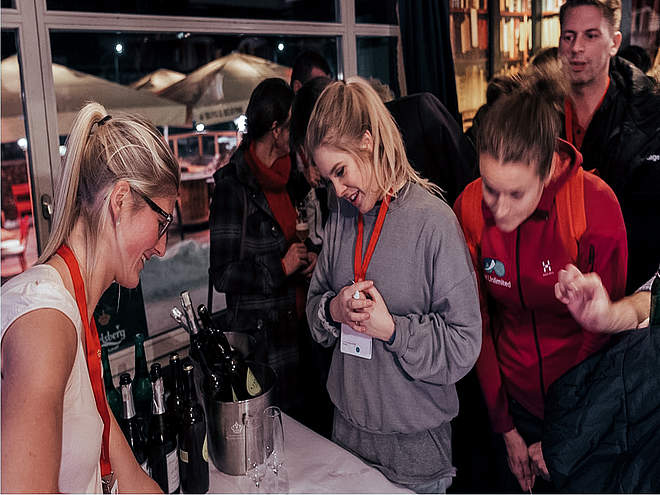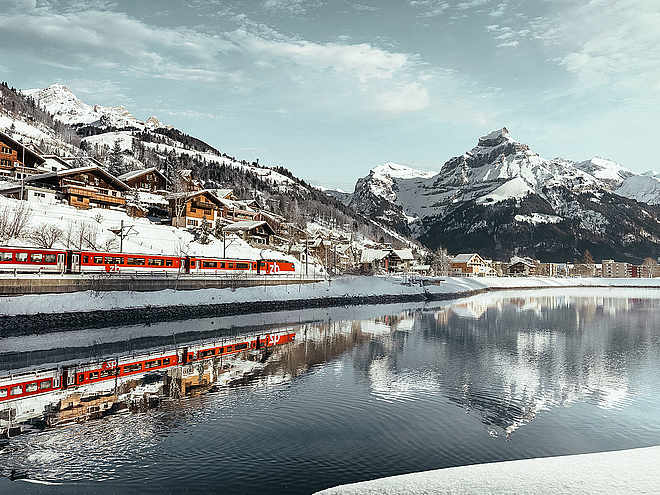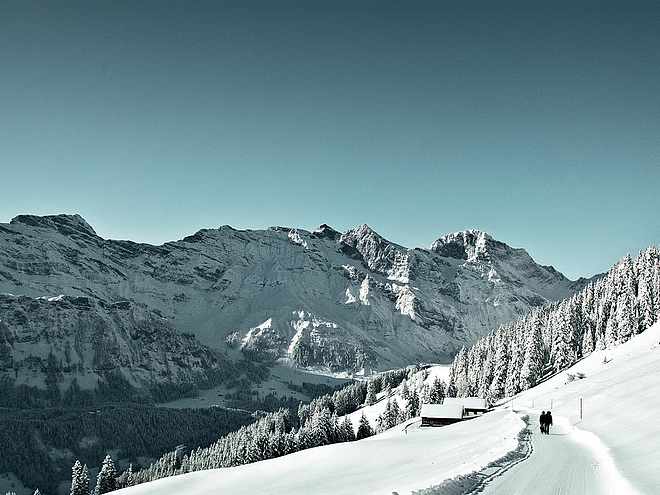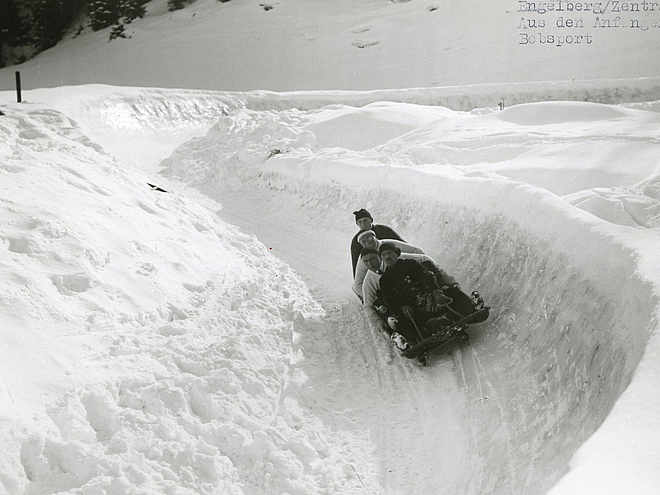The man looks like a being from another planet. With his safety helmet pulled low over his face, Werner Hurschler lets the sparks fly in his workshop. With pinpoint accuracy, he uses his welding machine to join two previously bent parts made of 2.5 millimetre thick sheet metal. And even when the welding seam is polished smooth with a grinder, the sparks fly. Werner Hurschler is actually a farmer. But in his spare time he pursues a special hobby. The mountain farmer is a bell smith. In Engelberg he shares this passion with other bell smiths. Urs Hess and Robi Tschümperlin also make cowbells. However, the three do not come into conflict with each other. Each has his own system for making cowbells. Werner Hurschler, for example, has the sheet metal deep-drawn over a mould with the help of a 120-ton press. Urs Hess, on the other hand, gets the sheet metal into the right shape with targeted hammer blows.
Read moreWerner Hurschler's customers are no longer just farmers. For collectors, it is almost a must to have an original Hurschler bell in their collection. Werner Hurschler has seven different models of the large bells, the so-called Fahrtreicheln, in his range. There are 12 different models of the "Chlepfen". This is the name given to the smaller bells that farmers put on their animals mainly when they go out to pasture.
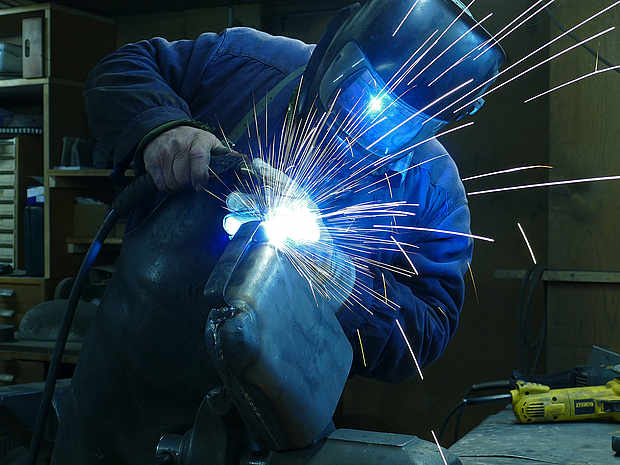
Each bell made by the Engelberg bell smiths is unique. The most important thing is the perfect tone. Even the slightest carelessness during manufacture can cause the tone to clang. For Werner Hurschler, this is when the bell ends up in the scrap iron. The work of a whole day is gone. Because that is how long Werner Hurschler needs to make one of his bells. "The sound of the Alps" is how the bell smith describes the tinkling of the cowbells, "has to be perfect". After all, the cowbells have an important task to fulfil. In foggy weather, they serve as a guide for the farmer walking across the pastures. Even if every bell sounds the same to outsiders, the farmer can tell from the pitch of the bell where which of his animals is currently in the pasture without being able to see them directly. Seen in this light, the Engelberg bell smiths fulfil an important task with their craft that has been handed down from generation to generation. And the guests enjoy the sound of the Alps.
Of course, the right cowbell also needs a matching leather strap. In Wolfenschiessen in the Engelberg Valley, these unique pieces are made by hand and with much love in the embroidery shop of Beat Mathis. The beautiful unique pieces and the matching bell can be bought directly in his shop.
Author
Text & Pictures: Beat Christen

